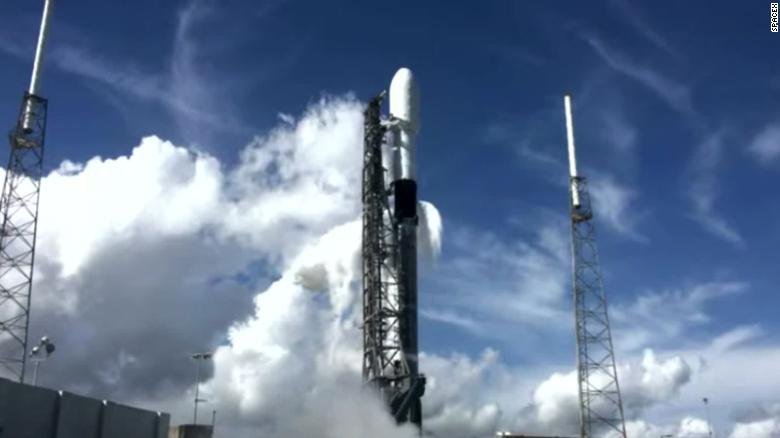SpaceX Falcon 9 launches and deploys satellite, days after another rocket crashed in Texas

CAPE CANAVERAL, Florida — SpaceX’s Falcon 9 rocket launched into space Sunday, successfully deploying a satellite for radio provider SiriusXM.
Falcon 9 took off from Cape Canaveral Space Force Station in Florida’s Brevard County at 12:30 p.m. ET, according to NASA. It marks the the rocket’s 25th flight this year, NASA said.
About 10 minutes after posting video of the liftoff to its Twitter feed, SpaceX tweeted that the rocket’s first-stage booster had landed on its droneship, Just Read the Instructions, located in the Atlantic Ocean.
The booster separates after ascent and performs a flip maneuver, allowing it to use its engines and “grid fins” to steer itself to a soft landing on the droneship.
The reusable booster has been recovered seven times, SpaceX said.
The same first-stage rocket booster supported Crew Dragon‘s first flight to the International Space Station, the Canadian Space Agency’s RADARSAT Constellation Mission to deploy Earth-observation satellites and four launches for Starlink, a SpaceX initiative to provide satellite internet access, the company said.
Sunday’s recovery marked the 69th time the company has recovered a Falcon 9 first-stage booster, it said.
Shortly after 1 p.m., SpaceX tweeted that the rocket’s latest payload, an SXM-7 satellite for SiriusXM, had been successfully deployed.
The successful mission comes four days after SpaceX’s steel rocket prototype, the Starship SN8, which CEO Elon Musk hopes can one day be used to ferry humans to Mars, crashed attempting a landing similar to the ones that Falcon 9 boosters have successfully performed.
Starship SN8 took off from south Texas on Wednesday, soaring over the Gulf of Mexico before steering itself back to the launch site, where it slammed into the ground and exploded.
“Low pressure in the fuel header tank during the landing burn led to high touchdown velocity resulting in a hard (and exciting!) landing,” SpaceX said in a statement.
SpaceX sought data on how Starship SN8 could re-enter the Earth’s atmosphere after returning from an extraterrestrial mission and steer itself to a precise landing point. Musk touted the mission as a success.
“Fuel header tank pressure was low during landing burn, causing touchdown velocity to be high & RUD, but we got all the data we needed!” he said in a tweet.
RUD stands for “rapid unscheduled disassembly” — a fancy way to say “crashed.”
